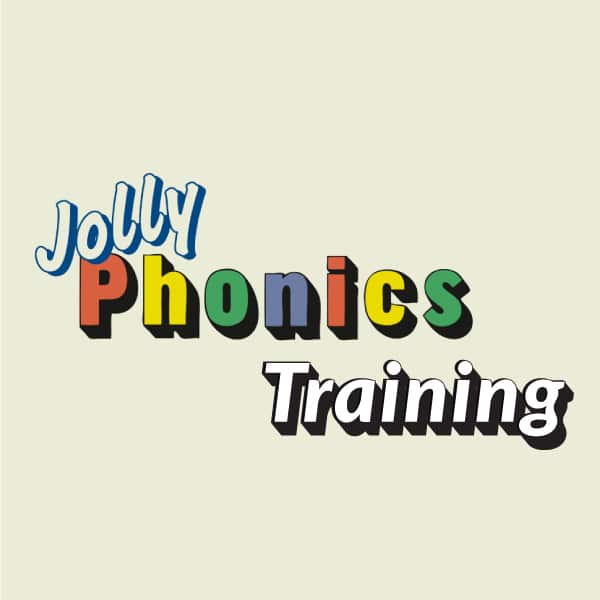
FAQS Jolly Phonics
Here are some frequently asked questions (FAQS) about Jolly Phonics:
-
What is Jolly Phonics? Jolly Phonics is a systematic phonics program that teaches children to read and write using synthetic phonics. It is designed to help children learn the sounds of the English language and how to blend them together to form words.
-
How does Jolly Phonics work? Jolly Phonics uses a range of multi-sensory activities and resources to help children learn phonics. Children are taught the 42 letter sounds of the English language and how to blend them together to form words. They also learn to identify and write the letters of the alphabet, and are taught early spelling and grammar rules.
-
What age group is Jolly Phonics suitable for? Jolly Phonics is suitable for children aged 3 to 8 years old, although it can be used with older children who are struggling with reading and writing.
-
Is Jolly Phonics effective? Jolly Phonics has been shown to be an effective method of teaching phonics and literacy skills to children. Studies have found that children who learn using Jolly Phonics have better reading and spelling skills than those who learn using other methods.
-
Can parents use Jolly Phonics at home? Yes, Jolly Phonics resources are available for parents to use at home with their children. The Jolly Phonics program includes a range of resources such as books, workbooks, flashcards, and online resources that parents can use to help their children learn phonics and literacy skills.
-
How long does it take to complete the Jolly Phonics program? The length of time it takes to complete the Jolly Phonics program can vary depending on the age and ability of the child. Generally, the program can be completed in one to two years with regular practice and reinforcement.
-
Is Jolly Phonics suitable for children with learning difficulties? Jolly Phonics can be a helpful tool for children with learning difficulties such as dyslexia or ADHD. The multi-sensory approach of Jolly Phonics can help children with different learning styles to understand and retain phonics and literacy skills. However, it’s important to note that Jolly Phonics is not a cure or treatment for learning difficulties and should be used in conjunction with other interventions and support
Why Jolly Phonics starts with letter 'S'?
Jolly Phonics starts with letter S and not in the alphabetical order. The need of alphabetical order is only while using dictionary.
Jolly Phonics is a phonics program that teaches children how to read and write using a systematic approach to phonics. The program starts with the letter s because it is one of the most common and useful letters in the English language. The letter s is also one of the first letters that children learn to recognize and write, and it has a simple sound that is easy to learn.
In Jolly Phonics, children learn the sounds of the letters, rather than just the letter names, and they start with the simplest and most common sounds. The sound of the letter s is a simple, unvoiced consonant sound that is made by air passing through the mouth with the tongue in a specific position. This sound is one of the easiest for young children to make and recognize, and it is used in many common words, such as “sun,” “sit,” and “snake.”
Starting with the letter s also allows children to begin building words and practicing their phonics skills early on in the program. As they learn more sounds and letters, they can combine them with the letter s to make words like “sat,” “sip,” and “sack.” This helps children develop their reading and writing skills and lays the foundation for more complex phonics concepts.
How to become a Phonics Teacher?
“How to Become a Phonics Teacher”:
Are you passionate about teaching young children how to read? Do you want to help them build a strong foundation in literacy skills? If so, becoming a phonics teacher might be the perfect career path for you! Phonics is a proven method of teaching reading that focuses on the relationship between letters and their sounds, and it’s widely used in early childhood education. In this blog post, we’ll guide you through the steps to become a phonics teacher.
Step 1: Understand the Basics of Phonics
Before you start your journey to become a phonics teacher, it’s important to have a solid understanding of the basics of phonics. Phonics is the method of teaching reading that helps students learn the relationship between letters and their corresponding sounds. This includes understanding letter-sound associations, phonemic awareness (the ability to hear, identify, and manipulate individual sounds in words), blending and segmenting sounds, and recognizing common patterns in words.
There are many resources available to help you learn the fundamentals of phonics, including books, online courses, and educational websites. Familiarize yourself with different phonics programs and approaches, such as synthetic phonics, analytic phonics, and phonics through literature, to gain a comprehensive understanding of phonics instruction.
Step 2: Obtain the Necessary Education and Credentials
To become a phonics teacher, you’ll need to have a solid educational foundation. Most schools and educational institutions require at least a bachelor’s degree in education or a related field. Some may also require additional certifications, such as a teaching license or a specialized certification in early childhood education.
Look for accredited teacher education programs that provide coursework in phonics and early literacy. These programs typically cover topics such as phonemic awareness, phonics instruction, reading assessment, and lesson planning. Some programs may also offer field experience or student teaching opportunities, which can provide valuable hands-on experience working with young students.
Additionally, consider pursuing specialized certifications in phonics instruction. Organizations such as the International Dyslexia Association (IDA) offer certifications for educators who specialize in dyslexia and structured literacy instruction, which often includes phonics.
Step 3: Gain Practical Experience
Practical experience is crucial to becoming a successful phonics teacher. Look for opportunities to gain hands-on experience working with young children in a classroom setting. This could include student teaching, volunteering at schools or literacy programs, or working as a teacher’s aide. Practical experience will allow you to apply the knowledge you’ve gained from your education and certifications in real-world situations, develop effective instructional strategies, and understand the individual needs of students.
As you gain experience, reflect on your teaching practices and continually refine your instructional strategies. Consider seeking feedback from experienced teachers, mentors, or supervisors to help you improve your skills and become a more effective phonics teacher.
Step 4: Stay Updated on Best Practices
Education is a constantly evolving field, and it’s important to stay updated on the latest research and best practices in phonics instruction. Stay current with professional journals, attend workshops, conferences, and webinars related to phonics and early literacy, and engage in professional development opportunities to expand your knowledge and skills.
Continuously reflect on your teaching practices and seek feedback from colleagues and mentors to ensure that you are using evidence-based instructional strategies that are proven to be effective in teaching phonics. Stay open to learning and adapting your instruction based on the needs of your students and the latest research in the field.
Step 5: Keep a Positive Attitude and Be Patient
Teaching phonics can be challenging at times, as every child learns at their own pace and may face different difficulties along the way. It’s important to keep a positive attitude, be patient, and be adaptable in your instruction

